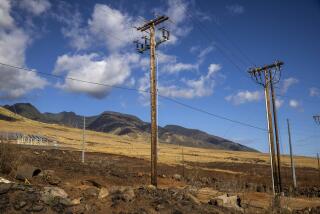Development plans threaten Russia seed bank for unique fruit varieties
- Share via
A tug of war between scientists and government real estate developers in Russia will determine the global future of almost 1,000 strawberry varieties, along with hundreds of strains of berries, apples, pears and plums.
The threatened plants are part of a collection of rare berries and other fruits growing at the Pavlovsk Experimental Station, a seed bank that blankets over 200 acres of prime land about 20 miles outside St. Petersburg; 90% of the bank’s more than 5,000 plant varietals are found nowhere else.
The station was founded in 1926 by Russian botanist Nikolai Vavilov, who is considered the father of the modern seed bank. During the World War II siege of Leningrad, as St. Petersburg was formerly called, 12 scientists at the station died of starvation rather than eat the seeds they had worked to save.
Now, however, the Russian Housing Development Foundation, a government agency founded in 2008 to repurpose inefficiently used agricultural land for housing, wants to do just that with the experimental station.
A government hearing on the matter is scheduled for Wednesday morning, and the ruling is expected to favor the housing developers, especially since the federal government owns the land.
“Legally, they are in the right,” said Sergey Alexanian, deputy director for foreign relations at the Vavilov Research Institute of Plant Industry in St. Petersburg, which manages 12 crop development and conservation facilities across Russia, including the one facing the current threat. “But from the, can we say, moral point of view, it’s impossible to destroy the collection.”
Many Russian and international scientists use the Pavlovsk station plants as raw materials for developing new varieties, creating crops that are more productive, for example, or better adapted to a warming climate.
“Saving varieties is critical for breeding,” said Kent Bradford, a plant scientist at UC Davis. “When breeders are faced with a new issue, like a disease or growing in a new area, they need to go back to that diversity to see which ones are resistant or have traits that they like.”
The Pavlovsk facility is one of about 1,400 such operations in the world, operated by governments as well as universities and research institutes; their simple goal is to protect plant biodiversity. Many are in developed nations with well-established funding and are thus relatively protected, but some in less developed or more strife-torn nations are threatened or have already been destroyed by war or lack of money.
Each facility generally specializes in crops native to its region or that grow well in its climate, while others, such as the Tomato Genetics Resource Center at UC Davis, focus on particular types of plants. The best known is probably the Svalbard Global Seed Vault on the remote Norwegian island of Spitzbergen in the Arctic, which keeps frozen seeds as backup for collections around the world, but that facility’s stores are far from complete. Moreover, not all plants can grow from frozen seeds — such as most of those at the Russian station.
Furthermore, there is little possibility of relocating the Russian facility. An appropriate backup site isn’t available, and moving all the plants would be expensive and labor-intensive. “These are not some boxes to move to another location; these are trees,” Alexanian said.
In short, if the fields are razed, the particular varietals that grow there will be gone forever.
“There’s no backup for this collection, and that’s the real tragedy of it all,” said Cary Fowler, director of the Global Crop Diversity Trust, an international organization whose mission is to conserve worldwide crop diversity. “This is extinction on a scale that I’ve not seen in my professional lifetime, and it can’t be replaced.”
rachel.bernstein@latimes.com
More to Read
Sign up for Essential California
The most important California stories and recommendations in your inbox every morning.
You may occasionally receive promotional content from the Los Angeles Times.










